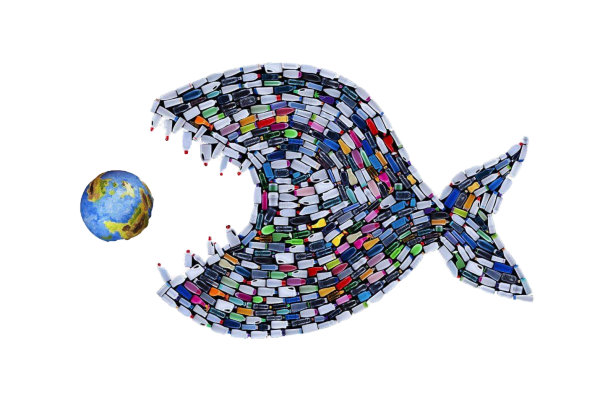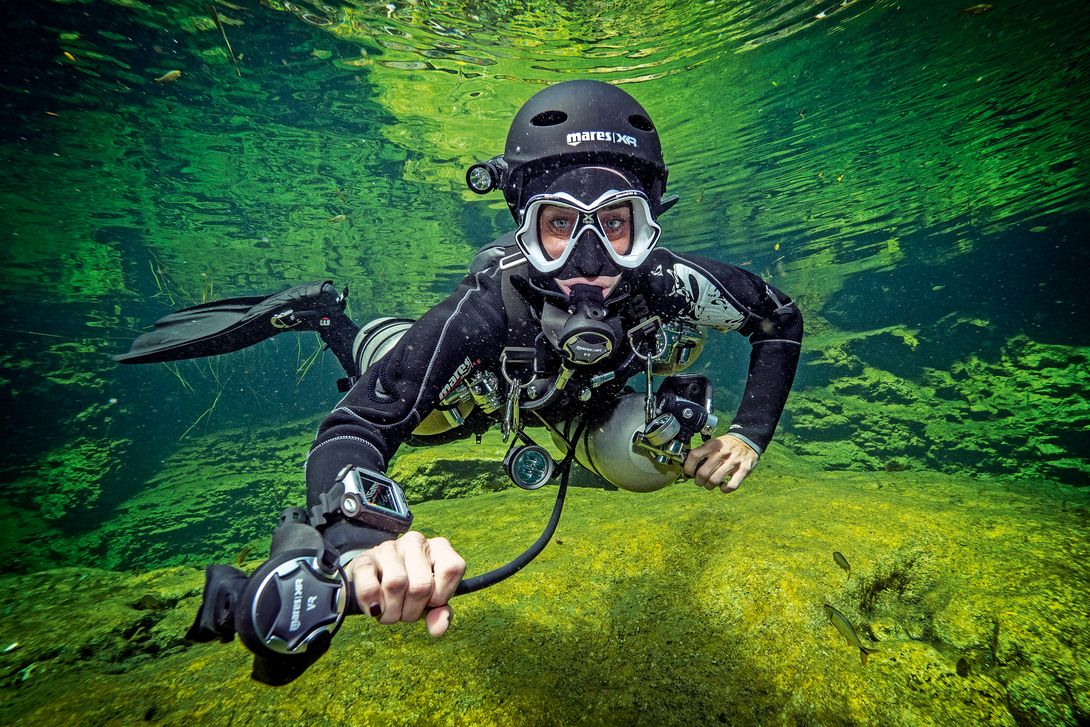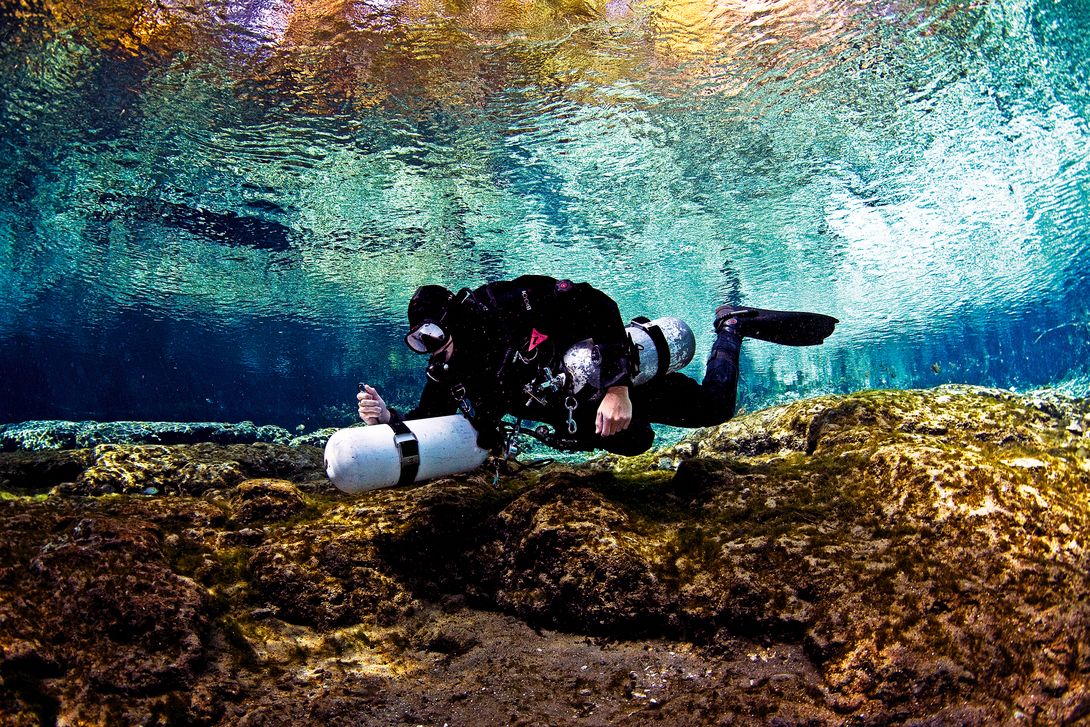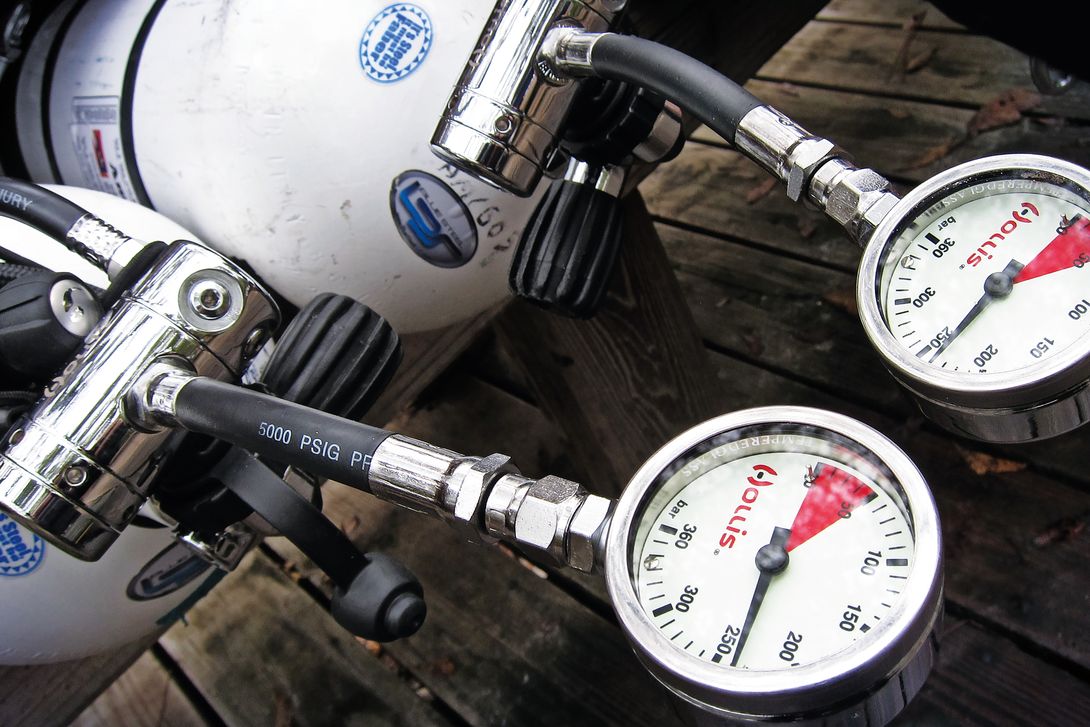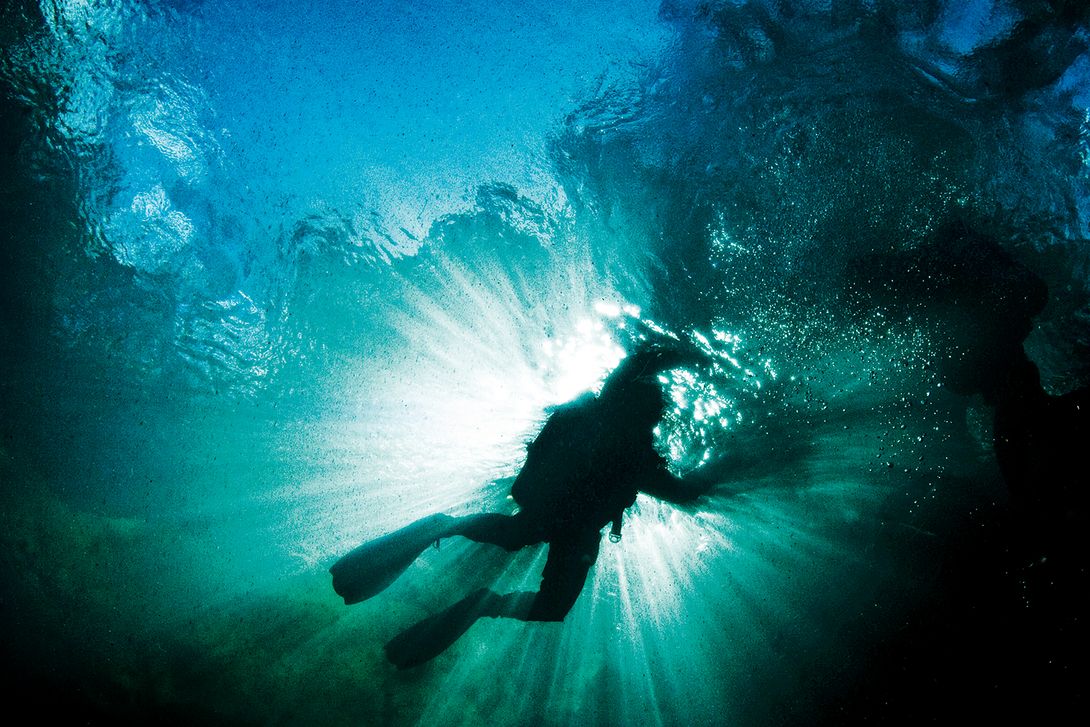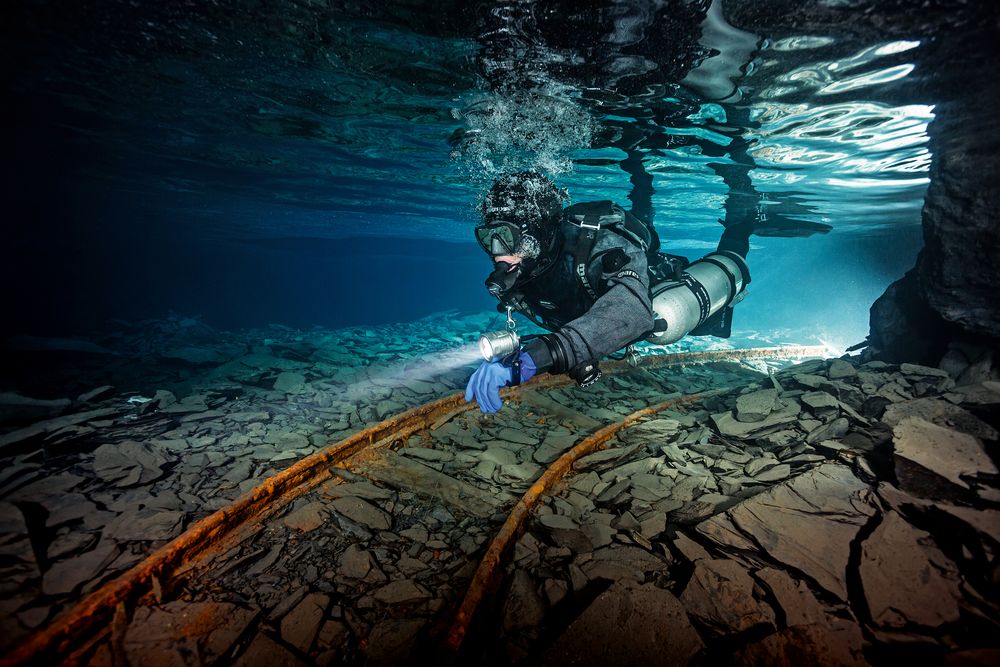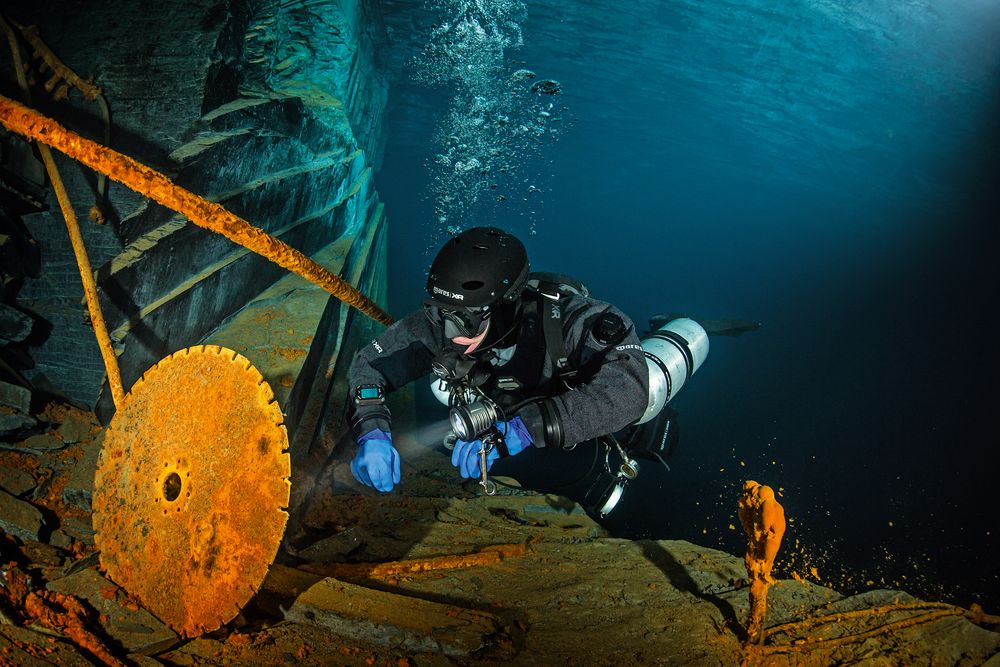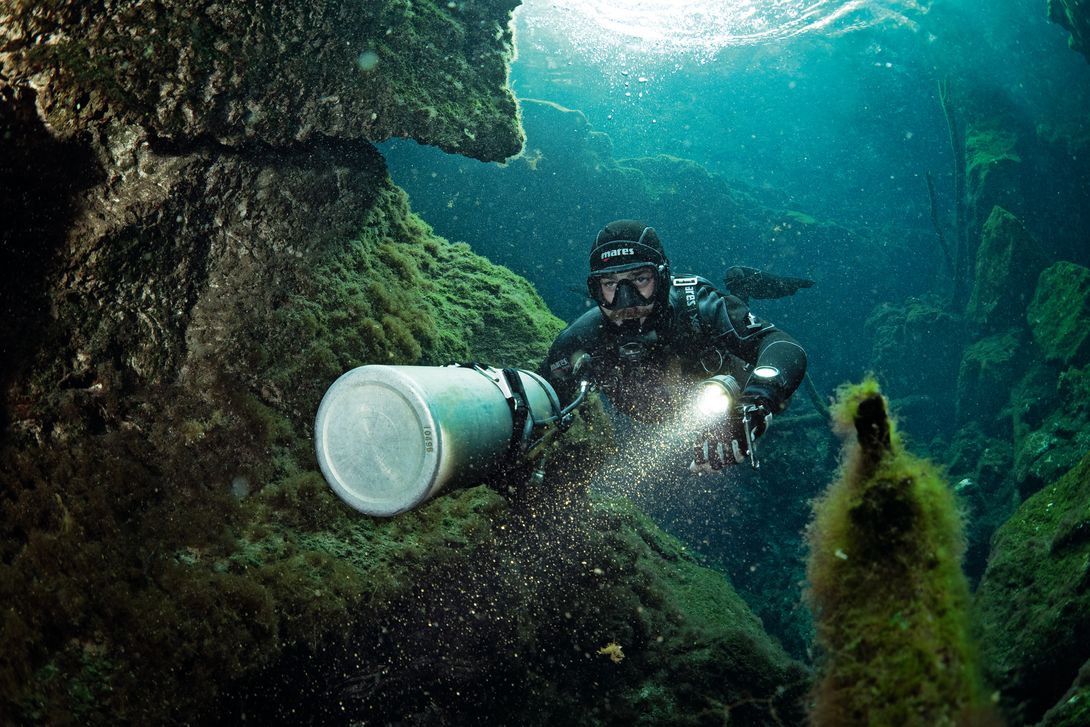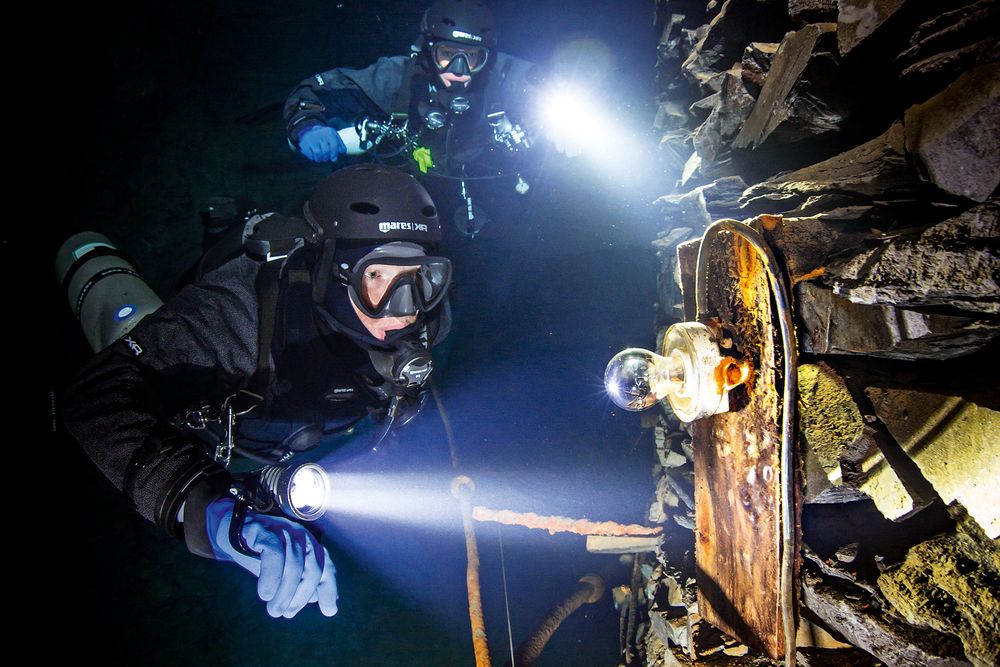What is sidemount diving?
The cylinders are attached down the sides of the diver, with the valves tucked under/behind the armpits for easy access.
The diver wears a harness and wing onto which the cylinders are attached leaving a greater range of movement at the neck and shoulder areas.
Why dive in sidemount configuration?
There are many reasons divers select sidemount as a configuration, this depends on the objective of the dive, the dive conditions and the individual.
1. Comfort/access: some divers find back mounted cylinders uncomfortable, heavy and hard to access the cylinder valves. When diving in sidemount configuration, the diver can don and doff the cylinders in the water or on the boat, reducing weight and stress on the diver. This is particularly great for those with back injuries or limited range of movement. Having the cylinders close and easy to access allows for a greater sense of security. If any equipment should malfunction, the diver can deal with this much more easily and rapidly to avoid any unwanted emergency ascents. For those divers who find they have a limited range of movement available at the neck due to restrictive back mounted cylinder valves, sidemount configuration eliminates this problem.
2 each. This can provide a top end amount of 4800 litres plus depending on the cylinder filling pressure (232bar or 300 bar). With more air comes longer bottom time or reduced stress and worry over consuming your air more rapidly than your buddy or dive group.. More Breathing Gas: sidemount divers generally use two cylinders ranging from 7 litres each to 12 litres
3. Added Redundancy: while on sidemount we breathe from each cylinder every so often to maintain balanced air levels in each cylinder, having two separate first stages and cylinder valves adds a level of redundancy. Should one have a failure point, you can simply turn off the cylinder to isolate the problem, breathe from the other, and safely end your dive. As a bonus trimming a pony cylinder in sidemount configuration can be much more comfortable and streamlined too.
4. Diving in an overhead environment: having the cylinders positioned at the side of the body allows the diver to manipulate their trim and also bring them away from the side and in front or behind or completely doff the cylinder during the dive, in order to fit through smaller gaps in caves, wrecks and other overhead environments. The cylinder valve and therefore, first stage regulator sit tucked under/behind the armpit, protecting them from any bumps and scrapes when squeezing through smaller gaps, reducing the chance of equipment damage and unwanted emergency ascents.
Who can learn to dive in sidemount configuration?
Any certified open water diver (from any recognised agency)
Why do I need to do a course to dive in this configuration?
New equipment means greater task loading and ultimately a slightly raised pre and during dive stress level and we always recommend changing only one piece of equipment at a time. Sidemount configuration is a whole new setup and requires the diver to learn firstly how to set up their harness and wing to suit their body shape and cylinder type/size, then how to adjust any ‘variables’ on the harness/cylinder attachment points in order to achieve and maintain correct trim in the water. Once the configuration and trim is achieved, the diver must learn how to self-aid and buddy assist in skills such as air sharing, buoyancy control during a bladder failure, feathering the cylinder during a free-flowing regulator, ‘winging’ cylinders and a few more. All of these skills are performed differently in sidemount configuration and therefore, the diver must become proficient in these new skills and new equipment whilst under the expert guidance of their dive professional. Developing ability and comfort ultimately increases your enjoyment and safety when diving. We want you to be autonomous at performing these skills so that you can be confident in your safety, making your dive experiences top notch.
